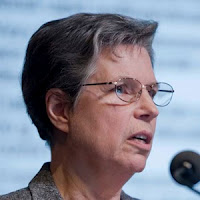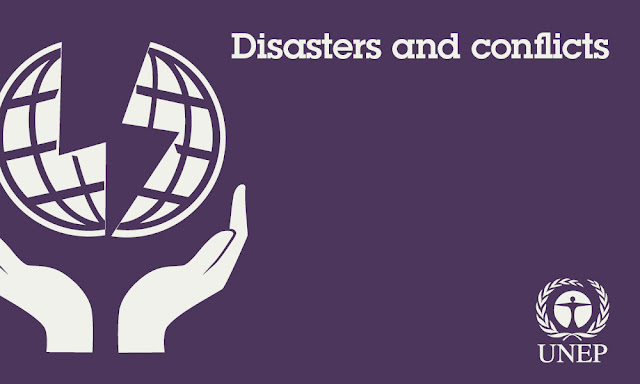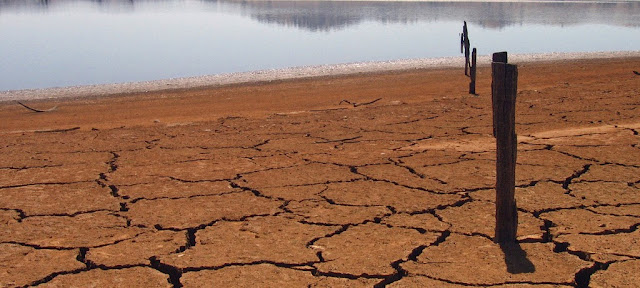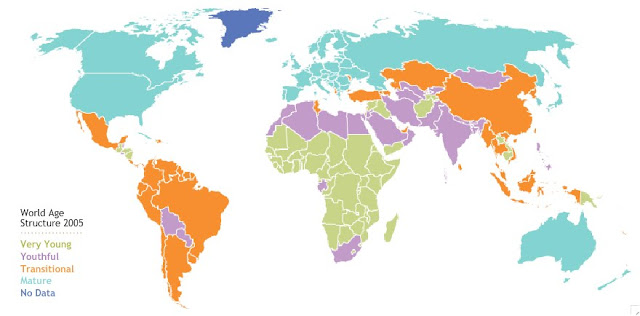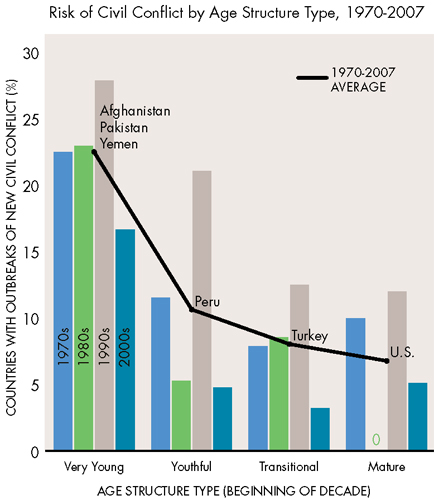Showing posts from category environmental security.
-
Linden Ellis, ChinaDialogue
China’s Biggest Environmental Stories of 2010/11
›January 21, 2011 // By Wilson Center Staff The original version of this post first appeared on ChinaDialogue’s The Daily Planet blog, December 23, 2010.
The original version of this post first appeared on ChinaDialogue’s The Daily Planet blog, December 23, 2010.
Last month I spent a few days in Washington, DC meeting mostly with people working on U.S.-China environmental relations. Among others, I met with Jennifer Turner, director of the China Environment Forum at the Wilson Center (and my former boss), and we had an exciting conversation about the biggest China environmental stories covered in the United States in 2010, and what we hope to see in 2011. I was inspired to write this post based on our conversation. This is of course neither definitive nor exhaustive, but merely my perspective on how things look from Washington.China Is Winning the Clean Energy Race. Energy was the big story in 2010. Studies show that the United States will need to renovate or retire virtually all of its power plants by 2050, and China must build a modern energy sector to serve a growing population. Both countries emphasized their intentions to build a clean energy economy in 2010 and almost immediately competition was dubbed a “race.” Soon after it was declared a two-party race, it became evident that China was winning.
China’s clean energy investment is two times greater than that of the United States, according to a Pew Charitable Trust report published last year. The news has centered upon China’s ability to make sweeping changes to domestic energy markets, in stark contrast to the United States’ inability to pass climate legislation. Most notably in 2010, China passed a regulation requiring that a percentage of all electric company profits be used for energy efficiency every year.
Energy “Co-op-etion.” Perhaps as a response to fears of “losing” the energy race, public opinion in the United States focused on new and existing energy cooperation and on market fairness. The U.S.-China Clean Energy Research Center, signed in 2009, was officially launched in 2010 and is likely to formalize a great deal of on-going cooperation on energy between the United States and China. In December, Jonathan Silver, Executive Director of the U.S. Department of Energy’s Loan Guarantee Program, spoke at a conference in San Francisco and described the developing energy relationship between China and the United States as “co-op-etition” – the two countries have complementary markets and a lot to learn from each other but will compete in U.S., Chinese, and international markets to sell clean technologies.
Concerns about the fairness of the market – initially because of changes in China’s government procurement laws discriminating against foreign clean technology companies – peaked with the U.S. Steel Workers’ petition in October. Americans are concerned that their technologies will suffer in the international market because of Chinese clean technology subsidies.
China “Ruined” Copenhagen. Perception that China ruined Copenhagen dominated the U.S. news early in the year but was softened by a more positive outlook following Cancun. Anxiety in Washington, DC regarding the accuracy of China’s CO2 data colored many debates on American participation in international climate negotiations all year.
Oil and Rare Earths. The oil spill in Dalian in July made big news in the United States as it came in the wake of the BP oil spill in the Gulf of Mexico. Many comparisons were made, despite the enormous difference in scale between the two incidents. Rare earth elements (the spine of the clean technology industry) were another major concern that arose in 2010 in Washington. Many of America’s rare earth mines were shuttered decades ago when Chinese mines were able to produce more affordably. This year, China began restricting rare earth exports, at least partially for environmental reasons, forcing the United States to consider reopening many of its mines and how to deal domestically with the environmental effects of those mines.
In 2011 I hope that interest in China’s environment will continue in the United States, but I expect that we will see less on renewables, as stimulus money runs thin, and rising concern for more traditional pollutants and basic environmental governance in China (especially regarding water and air pollutants).
The 12th Five-Year Plan. Set to be released early 2011, the 12 Five-Year Plan will initially dominate energy stories as it outlines how China will meet its ambitious energy intensity targets. I expect nuclear energy will replace wind and solar as the big stories in 2011. Nuclear liability should be addressed in China in 2011, as it was in India in 2010. Because of the close energy business ties between China and the United States, liability laws in China are likely to be more sympathetic to the needs of American companies than India’s recent law, which exposes nuclear components suppliers to unlimited liability.
Soil Pollution Prevention and Remediation. China’s soil pollution survey was completed in 2009 and the draft Provisional Rules on Environmental Management of the Soil of Contaminated Sites was released by the Ministry of Environmental Protection for comment in December 2009. The problem is huge and significant in China’s development and construction boom, and little data has been publicly released from the survey. I expect that in 2011, we will start to see active management and enforcement, at least in major cities.
Water Quality and Quantity. Water has and will likely continue to be, the greatest environmental concern in China and abroad, given its transboundary nature. Turner suggests we will see more on control of and attention to nitrogen pollution in China’s waterways in 2011.
To chime in with your comments on what you feel were the biggest stories of 2010 and what you predict will dominate 2011, be sure to let us know below or on ChinaDialogue.
Linden Ellis is the U.S. project director of ChinaDialogue and a former project assistant for the Wilson Center’s China Environment Forum.
Sources: Asia Society, ChinaDialogue, The New York Times, Pew Charitable Trust.
Photo Credit: “Factory in Inner Mongolia,” courtesy of flickr user Bert van Dijk. -
Elizabeth Malone on Climate Change and Glacial Melt in High Asia
› “There’s nothing more iconic, I think, about the climate change issue than glaciers,” says Elizabeth Malone, senior research scientist at the Joint Global Change Research Institute and Pacific Northwest National Laboratory. Malone served as the technical lead on “Changing Glaciers and Hydrology in Asia: Addressing Vulnerability to Glacier Melt Impacts,” a USAID report released in late 2010 that explores the linkages between climate change, demographic change, and glacier melt in the Himalayas and other nearby mountain systems.
“There’s nothing more iconic, I think, about the climate change issue than glaciers,” says Elizabeth Malone, senior research scientist at the Joint Global Change Research Institute and Pacific Northwest National Laboratory. Malone served as the technical lead on “Changing Glaciers and Hydrology in Asia: Addressing Vulnerability to Glacier Melt Impacts,” a USAID report released in late 2010 that explores the linkages between climate change, demographic change, and glacier melt in the Himalayas and other nearby mountain systems.
Describing glaciers as “transboundary in the largest sense,” Malone points out that meltwater from High Asian glaciers feeds many of the region’s largest rivers, including the Indus, Ganges, Tsangpo-Brahmaputra, and Mekong. While glacial melt does not necessarily constitute a large percentage of those rivers’ downstream flow volume, concern persists that continued rapid glacial melt induced by climate change could eventually impact water availability and food security in densely populated areas of South and East Asia.
Rapid demographic change has potentially factored into accelerated glacial melt, even though the connection may not be a direct one, Malone adds.
Atmospheric pollution generated by growing populations contributes to global warming, while black carbon emissions from cooking and home heating can eventually settle on glacial ice fields, accelerating melt rates. Given such cause-and-effect relationships, Malone says that rapid population growth and the continued retreat of High Asian glaciers are “two problems that seem distant,” yet “are indeed very related.”
The “Pop Audio” series is also available as podcasts on iTunes. -
Environmental Security at the UN
UNEP/PCDMB Progress Report From Brussels
›January 11, 2011 // By Lauren Herzer RisiAt a November Environmental Security Assessments conference on methodologies and practices, held jointly by ENVSEC and IES outside of Brussels, I had the opportunity to catch up with David Jensen, a policy and planning coordinator in the UN Environment Programme’s (UNEP) Post Conflict and Disaster Management Branch (PCDMB).
Jensen pointed to several upcoming reports coming from UNEP and expressed some relief that the concept of environmental security was finally getting some recognition without having to constantly be “banging on doors.”
PCDMB is a branch of UNEP created to provide five core services to UN member states: post-crisis environmental assessments; post-crisis environmental recovery; environmental cooperation for peacebuilding; disaster risk reduction; and, most recently, humanitarian action and early recovery.
There has been a steady stream of activity flowing from PCDMB and a lot to look forward to this spring:
Finally, it sounds like PCDMB is getting some recognition from within the upper echelons of the UN. Jensen has been asked to brief senior peacebuilding officials, and the Secretary-General’s political advisor called him in to talk about peacekeeping and natural resource management and conflict prevention.- The guidance notes on conflict prevention and natural resources, recently published on the PCDMB website, are draft notes that will be revised following pilot programs in four countries (Jensen particularly noted that there is much work to be done on them still). Ultimately, they hope to identify funding for 100 experts to deploy to countries (at the country’s request) to apply the guidance notes in the field.
- PCDMB has a project of 150 case studies coming out in six volumes in February 2011 on natural resources and peacebuilding.
- The culmination of a three-year UNEP project in Nigeria, which includes a full analysis and remediation plan of 300 oil-contaminated sites in the Ogoniland region of the Niger Delta, is expected to be released in the second quarter of 2011. (Editor’s note: though not finished, the report caught flack last summer over concerns that it will largely exonerate Shell.)
- PCDMB is also partnering with UN’s Department of Peacekeeping Operations and the Department of Field Support to assess options for resource-efficient technologies and practices in peacekeeping camps (the so-called “green helmets“). They will be issuing a policy report on best practices in May 2011.
In an interview with ECSP last fall, Jensen predicted the UN was finally approaching a fundamental tipping point for inclusion of natural resource issues in the broader peacebuilding process, and the kind of interest noted above appears to be proving him right.
In a report this summer, Secretary-General Ban Ki-moon noted the need for inclusion of environmental security in peacekeeping operations and highlighted the particular work of PCDMB in places like Afghanistan, Timor-Leste, and the Sudan.
It’s no surprise then that when Jensen briefed the full Secretariat, he said he was greeted by a packed house.
Image Credit: Arranged from “UNEP and Disasters and Conflicts at a Glance,” courtesy of UNEP. -
Peter Gleick on Peak Water
› “The purpose of the whole debate about peak water is to help raise awareness about the nature of the world’s water problems and to help drive toward solutions,” says the Pacific Institute’s Peter Gleick. But Gleick asserts that in the same way certain countries have been contending with “peak oil” concerns in recent years, they may soon also have to deal with “peak water” as well.
“The purpose of the whole debate about peak water is to help raise awareness about the nature of the world’s water problems and to help drive toward solutions,” says the Pacific Institute’s Peter Gleick. But Gleick asserts that in the same way certain countries have been contending with “peak oil” concerns in recent years, they may soon also have to deal with “peak water” as well.
Unlike oil, water is largely a renewable resource, but countries in Asia, the Middle East, and elsewhere are pumping groundwater faster than aquifers can replenish naturally. Gleick explains “there will be a peak of production in many of those places and eventually the food that we grow with that water or the widgets that we make from the factories that use that water will be nonsustainable and production will have to drop.”
The world’s surface and groundwater resources can be used sustainably even in the face of continued global population growth, says Gleick, but only “if we are careful about the ecological consequences and the efficiency with which we use it.” However, to date, he says, “those issues have not adequately been brought into the discussion about water policy.”
The “Pop Audio” series is also available as podcasts on iTunes. -
Water as a Strategic Resource in the Middle East
‘Clear Gold’ Report From CSIS
›“The real wild-card for political and social unrest in the Middle East over the next 20 years is not war, terrorism, or revolution – it is water,” begins the CSIS Middle East Program’s latest report, Clear Gold: Water as a Strategic Resource in the Middle East, by Jon B. Alterman and Michael Dziuban.
The authors contend that with growing populations, groundwater depletion, not the more traditional questions about transboundary river governance, poses a “more immediate and strategically consequential challenge,” particularly because many Middle Eastern governments have deflated the true cost of water to help spur growth and garner popularity.
In the accompanying video feature above, much-troubled Yemen is outlined as one of the most at-risk countries for water-induced instability. The narrator notes that “with Yemen’s population growing fast and almost half of agricultural water going towards the narcotic leaf qat instead of food, experts think that Sanaa [the capital] could run out of water in seven years or less and the rest of the country may not be far behind.”
In an interview with Reuters in 2008, Yemeni Water and Environment Minister Abdul-Rahman al-Iryani said the country’s burgeoning water crisis is “almost inevitable because of the geography and climate of Yemen, coupled with uncontrolled population growth and very low capacity for managing resources.”
Yemen is a particularly abject example because water availability is only one contributor in a long list of domestic problems, including a large youth population, gender inequity, immigration from the Horn of Africa, corruption, ethnic tensions, and terrorism.
The narrator concludes that “Yemen is the most worrisome example but clearly not the only one.” Alterman and Dziuban also point to Jordan and Saudi Arabia as states vulnerable to groundwater depletion.
For more on the Middle East’s current and future environmental security issues, be sure to check out The New Security Beat’s “Crossroads” series, with features on Iraq, Israel, Jordan, Lebanon, Syria, and Yemen.
Video Credit: “Clear Gold: Water as a Strategic Resource in the Middle East,” courtesy of CSIS. -
A Crucial Connection: India’s Natural Security
›January 5, 2011 // By Michael KugelmanExcerpted from the original op-ed, “A Crucial Connection,” by Michael Kugelman in The Times of India:
With India’s soaring growth and rising global clout hogging media headlines, it is easy to forget the nation is beset by security challenges. Naxalite insurgency rages across more than two-thirds of India’s states, while long-simmering tensions in Jammu and Kashmir exploded once again this summer. Meanwhile, two years post-Mumbai, Pakistan remains unwilling or unable to dismantle the anti-India militant groups on its soil. Finally, China’s military rise continues unabated. As Beijing increases its activities across the Himalayan and Indian Ocean regions, fears about Chinese encirclement are rife.
It is even easier to forget that these challenges are intertwined with natural resource issues. Policy makers in New Delhi often fail to make this connection, at their own peril. Twenty-five per cent of Indians lack access to clean drinking water; about 40 per cent have no electricity. These constraints intensify security problems.
India’s immense energy needs – household and commercial – have deepened its dependence on coal, its most heavily consumed energy source. But India’s main coal reserves are located in Naxalite bastions. With energy security at stake, New Delhi has a powerful incentive to flush out insurgents. It has done so with heavy-handed shows of force that often trigger civilian casualties. Additionally, intensive coal mining has displaced locals and created toxic living conditions for those who remain. All these outcomes boost support for the insurgency.
Meanwhile, the fruits of this heavy resource extraction elude local communities, fuelling grievances that Naxalites exploit. A similar dynamic plays out in Jammu and Kashmir, where electricity-deficient residents decry the paltry proportion of power they receive from central government-owned hydroelectric companies. In both cases, resource inequities are a spark for violent anti-government fervor.
Continue reading on The Times of India.
For more on India’s Naxalite rebellion and its natural resource drivers, see The New Security Beat’s “India’s Maoists: South Asia’s ‘Other’ Insurgency.”
Michael Kugelman is program associate with the Asia Program at the Woodrow Wilson International Center for Scholars.
Photo Credit: “Mysore Coal Man,” courtesy of flickr user AdamCohn. -
Emily Gertz, Momentum Magazine
U of M’s ‘Momentum’ on Water Scarcity, Population, and Climate Change
›December 20, 2010 // By Wilson Center StaffExcerpted from the original article, “Water Tight,” by Emily Gertz in the University of Minnesota’s Momentum magazine.
The next time you stop off at a pub for a quick bite, think about this: It took around 630 gallons of water to make your burger. Your pint of beer used around 20 gallons. Manufacturing your blue jeans and t-shirt drank up about 1,218 gallons of water: 505 and 713 gallons, respectively.
Total: nearly 1,900 gallons of water – and that’s without fries on the side.
These quantities are the “water footprint” of each product: the total amount of freshwater used in its manufacture, including producing the ingredients.
For many products, that footprint is Paul Bunyan–sized: With water seemingly cheap and plentiful, there has been little incentive to try to keep it small.
But today, that’s changing. Even though much of the water we use for growing food and making products is replenished by natural hydrological cycles, freshwater will be less reliable and available in the coming century. Population growth is increasing both demand for water and pollution of potable supplies. At the same time, climate change is disrupting historical precipitation patterns, shrinking freshwater sources such as glaciers and snowpack, and creating unprecedented droughts and floods.
According to an analysis published in Nature in September 2010, the freshwater supplies of most of the world’s population are at high risk.
“If you look at the global distribution of people and the global distribution of threat levels to human water security, the places with the highly threatened water security represent about 80 percent of the world population, over four billion people,” says study co-author Peter McIntyre, assistant professor at the University of Wisconsin’s Center for Limnology.
In the United States, a 2010 analysis by the consulting firm Tetra Tech for the Natural Resources Defense Council found that more than 1,100 counties – fully two-thirds of all counties in the lower 48 states – will contend with higher water risk by 2050 due to climate change alone. Fourteen states can expect extremely serious problems with freshwater supply, including Florida, Mississippi, New Mexico, and California.
It’s not surprising, then, that businesses are increasingly considering their corporate water footprint. They encounter water risk – and opportunities to reduce it – at many stages of their operations, from growing crops to running retail stores. Factoring such risks into their present and future planning is helping companies present themselves as good environmental stewards to the public, and potentially reduce risks to their earnings from water scarcity.
“It’s often said that water is going to be the oil of the 21st century, in the sense of becoming an ever-more scarce commodity,” McIntyre says. “In the grand scheme of things, you can live without oil, but you can’t live without water. Water is fundamental for all life. And that’s certainly true for business as well.”
Continue reading on Momentum.
Sources: Natural Resources Defense Council, Nature.
Photo Credit: Adapted from “Lake Hume at 4%,” courtesy of flickr user suburbanbloke. -
Demographic Security Comes to the Hill
›December 16, 2010 // By Hannah Marqusee“We are now in an unprecedented era of demographic divergence,” said Population Action International’s Elizabeth Leahy Madsen at a September briefing held by Congressman John Tierney’s Subcommittee on National Security and Foreign Affairs and Congressman Russ Carnahan’s Subcommittee on International Organizations, Human Rights and Oversight.
Eighty percent of the world’s conflicts occur in places where 60 percent or more of the population is under 30, and 90 percent of countries with young populations have weak governments, said Chairman Tierney in his opening remarks. He said that while such demographic trends “appear to be issues for the future…it is important that we start this dialogue today, so that we can make steps to address [them].” ECSP Director Geoff Dabelko and the Stimson Center’s Richard Cincotta joined Madsen on the panel titled, “The Effects of Demographic Change on Global Security,” at the Capitol Visitor Center.
Youth Bulges and National Security
The countries of greatest security threat to the United States are also those with the youngest age structures and rapidly increasing populations, said Madsen. By next year, the world’s population will have reached seven billion, with 95 percent of that growth occurring in the developing world.
Large youthful populations can be a source of national strength because they provide innovation and manpower, said Dabelko, but without significant investment they may also contribute to state instability. When there are often few opportunities to obtain a job or an education for young people, there are low “opportunity costs” to joining a rebel group, said Madsen.
State instability can be affected by youth bulges, shifting religious or ethnic compositions, or food and water insecurity, but age-structural transitions are the strongest indicator of state performance, said Cincotta. Despite conventional wisdom, there is actually little evidence to link state failure with premature adult mortality due to AIDS or a high male-to-female ratio, he added.
It is not only developing countries with high fertility rates that face demographic difficulties, Cincotta noted. Countries such as Japan and Germany will soon have reached a “post-mature” age structure in which their aging populations and comparatively small workforces will tax state institutions and threaten economic stability.
Population Policies: Using “Soft Tools” to Improve National Security
Recently, leaders in the U.S. government have been paying increased attention to the linkages between demography and security through the “three Ds:” diplomacy, development, and defense. In 2008, the National Intelligence Council’s Global Trends 2025 included demographic assessments to analyze security trends, and this year, the National Security Strategy featured demographic trends along with the environment and other non-traditional areas.
Dabelko said that while this growing recognition signals progress, the “hard tools” of the traditional security community must be bolstered with “soft tools” commonly used by the international aid community, such as female empowerment, education, health services and youth employment.
Madsen argued that empowering the 215 million women with an unmet need for family planning worldwide through increased funding for voluntary family planning programs is a cost-effective way to shape population trends and ultimately reduce security threats.
“Demography is not destiny,” said Madsen. “Family planning has been an unsung signature of U.S. foreign assistance for decades.”
Similarly, Cincotta said that policies should help states transition out of youth bulges, and help countries with aging populations reform social institutions to protect older people.
Dabelko added that while progress has been made in acknowledging the linked nature of population trends and national security, there is significant room for improvement. Pointing to the successes of integrated population, health, and environment (PHE) programs, which provide environmental conservation and family planning services simultaneously, he called for similar programs to address population dynamics and conflict prevention. Long-term solutions call for coordinated resources and integrated strategies, he said.
Read the speakers’ full remarks: Chairman John F. Tierney, Richard Cincotta, Geoff Dabelko, and Elizabeth Leahy Madson (slides).
Sources: Guttmacher Institute, Population Action International, National Intelligence Council.
Image Credits: “World Age Structure 2005” and “Risk of Civil Conflict by Age Structure Type, 1970-2007,” courtesy of Population Action International.


